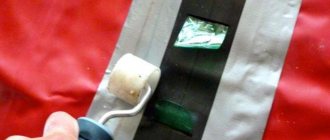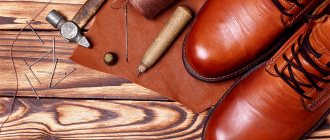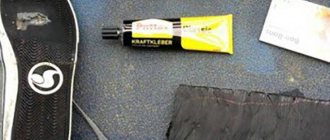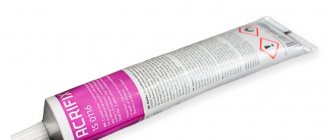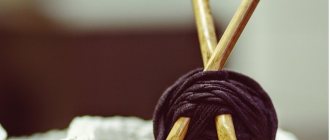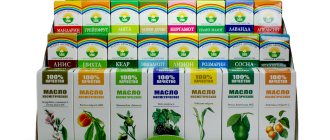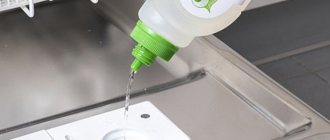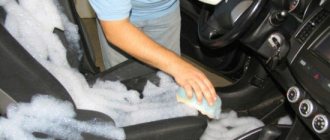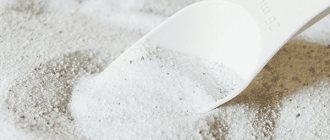Types of adhesives for parquet
Modern manufacturers present to the market a wide selection of parquet adhesives that differ in composition, purpose and performance characteristics. For different types of wood and each type of parquet board, it is advisable to select the appropriate material, taking into account the moisture and temperature conditions of the room and the type of base on which the dies are planned to be laid.
According to the main component included in the composition, all parquet adhesives can be divided into several groups:
- Dispersed - such products are based on water with the addition of natural resins, which makes them harmless and safe for human health. They are a good solution for installing ash or oak boards, but are not recommended for use if you plan to install wood with low moisture resistance (for example, alder, beech, fruit trees).
- Synthetic – solvent-based parquet adhesives with rubber or synthetic resins. Such compositions have a wider range of applications and are used for laying wood that is prone to swelling. However, they have a specific odor and are highly flammable, so they are prohibited for use near open fire sources.
- Polyurethane - are made on the basis of urethane and are suitable for installing solid boards or piece parquet. Polyurethane products have a fast drying rate and can be used on exotic woods such as merbau or bamboo.
In addition to the base, the classification of parquet adhesives divides materials according to their chemical composition into one-component and two-component. The former are immediately ready for use, the latter consist of a main component and a hardener, which must be mixed together before application to the surface. In the catalog of the TBM-Market online store you will find both types of material (both one-component and two-component) and you will be able to choose the appropriate option according to your needs and the type of parquet board.
Installation method without plywood: features
Block parquet and boards can be attached directly to concrete. This way, significant savings in money, time, and effort are achieved. Typically, plywood was used earlier, when there were no strong adhesives; floors were made on wooden joists and floors with bitumen backfill and hardboard on top.
Block parquet can be easily laid on concrete without gaps or cracks. After finishing, the floor is reliable and smooth. The boards are attached to the concrete base with glue, then the parquet is sanded with a special machine or manually, the cracks are sealed with sealant, and sanded again. The finished surface is primed, coated with oil or varnish.
Varnish coating is considered a higher priority, as it protects the floor surface from mechanical damage and moisture, making it durable and aesthetically pleasing.
A solid board is not always ideal in terms of parameters and geometry, so if you install it without plywood, you need to fix it with nails and tighten it.
Dispersion adhesives
Water-dispersed parquet adhesives are in high demand among buyers due to their environmental friendliness and lack of odor. The mixture contains no solvents or dangerous volatile elements, so it is non-toxic and can be used in living rooms. As mentioned above, the composition includes water, which evaporates when hardened and leaves small particles of resin on the surface with excellent adhesive properties.
The quality of dispersion adhesive for parquet largely depends on the amount of moisture it contains - the less it is, the better the material. Since wood can warp even with the slightest contact with water, the product is best used for thick dies made of water-resistant wood. In particular, it is often used for oak parquet, which is durable and resistant to the harmful effects of moisture.
One of the advantages of this parquet adhesive is its affordable price. It is often used not only for joining parquet tiles, but also for gluing a waterproof plywood underlay under the parquet. As for the disadvantages, in addition to being demanding on wood species, it has a long drying period of up to 5–7 days or more.
Rubber adhesive mixture
Rubber parquet adhesive is one of the most elastic of parquet adhesives. It is suitable for gluing:
- traffic jams;
- laminate;
- parquet;
- plywood;
- massive board.
Excellent for finishing floors made of wood types that are not resistant to moisture: ash, hornbeam, walnut, birch. Advantages of glue:
- high wear resistance;
- does not change the shade of the parquet surface;
- moisture resistance.
Before gluing parquet or plywood using a rubber compound, you need to consider:
- The adhesive can be applied to the surface of the base with a humidity of no more than 4%;
- When the glue dries, the air humidity readings should be less than 65%, the temperature should be above 19º (about a day).
Synthetic adhesives
Synthetic parquet adhesive is suitable for all types of flooring, therefore it is one of the most common on the market. It differs from aqueous solutions in its stronger adhesion and the presence of solvents, which give off an unpleasant odor and are explosive. On the other hand, after drying, the composition loses its toxicity and becomes safe for human health.
The main advantages of synthetic parquet adhesives include maintaining fluidity for 15–20 minutes after application. This greatly facilitates installation work and allows you to adjust the location of the dies during their installation. The time for complete curing of the material varies from 3 to 5 days.
Synthetic adhesives for parquet are usually used in cases where the use of water-dispersion mixtures is contraindicated for parquet boards. They can be used for wood that is afraid of water, such as beech, alder, apple or cherry. The only limitation is heated floors, since when heated, the solution layer may evaporate and the dies will begin to wobble.
It is recommended to work with parquet adhesives based on synthetic resins in a well-ventilated area using a respirator. When installing, do not smoke or use any other sources of ignition. If you follow precautions and installation technology, you can achieve a strong connection with increased elasticity and good adhesion to the base.
Installation of parquet boards: main rules
In order to glue a parquet board to a concrete floor efficiently and beautifully, you need to study some rules and features of the technology.
How to properly glue parquet to a concrete floor:
- Careful preparation of the concrete screed for work - you can install the parquet board at least 28 days after pouring the floor, on a flat base without defects (except for the smallest ones, since they will be covered with a layer of glue and insulating materials).
- It is advisable to lay layers of hydro/vapor barrier between parquet and concrete. Under certain conditions, an additional thermal insulation layer is often laid.
- During installation, you can use bitumen mastic, which acts as a waterproofing and primer at the same time.
- The glue must be chosen correctly, taking into account the characteristics of the surface, wood, the size of the lamellas, and other important conditions.
- The humidity of the screed should be in the region of 3.5-4%. It is advisable to measure it with a device, since this is an important parameter for laying parquet.
- Mandatory level control - the base must be pre-leveled and during the work the master must constantly check the lamellas to ensure that local differences do not occur, which then create a creak and contribute to deformation and destruction of the coating.
- Priming - a special composition is applied to the concrete, which largely affects the strength and reliability of fixing the parquet to the glue. It is advisable to select a primer in accordance with the adhesive composition.
One-component adhesives
One-component parquet adhesives can be used for piece, mosaic or multi-layer coverings. They are based on silane or MS polymers, which provide an elastic coating with excellent adhesion. Such compositions are applied directly to the cement screed and are suitable for any type of wood, as well as parquet exposed with varnish.
Hardening of the material occurs through the interaction of its components with moisture present in the air. This criterion can be attributed to the disadvantages of the composition, since polymerization due to natural humidity significantly increases its curing period. Another disadvantage is the fairly high price.
Two-component adhesives
Two-component products are a universal material that is suitable for all types of wood and for different methods of laying parquet boards. Unlike one-component parquet adhesive, it promotes better fixation of the dies and significantly extends the service life of the coating. The main advantages of such compositions include high curing speed (up to 24 hours), low consumption and excellent adhesive ability, which allows them to be used for massive and large-sized boards.
Two-component parquet adhesives are most often made from polyurethane or polyvinyl acetate and are characterized by the absence of solvents. Before laying parquet, the base should be mixed with a hardener, adhering to the proportions specified in the manufacturer's instructions. The disadvantages of two-component compositions include the limited time of use of the prepared mixture, which in some materials is no more than 2 hours.
Is it necessary to prime the surface?
Despite the fact that some types of adhesives indicate that they can be used without priming, this stage of work should not be neglected. Application of primer will provide:
- binding of dust particles remaining on the surface;
- uniform absorption of glue;
- adhesive strength.
A double primer is applied using a roller. After applying the first layer, you need to wait for the composition to dry and repeat the procedure. Installing a parquet board on a primed base will be stronger.
Glue selection criteria
The choice of adhesive for parquet should be approached with special attention. During operation, parquet floors are constantly subject to compression and expansion under the influence of changes in humidity and temperature, which entails significant stress between the tiles. When using a low-quality composition, there is a high probability of boards detaching from the base and causing cosmetic and functional defects. To avoid such problems, when purchasing material you need to consider the following criteria:
- purpose of the premises;
- the type of wood from which the parquet is made;
- type of base (concrete, cement, plywood, etc.);
- dimensions of the dies;
- board laying options.
It is important to remember that if you buy bad parquet glue, it will not be able to provide proper adhesion of the planks and the base. Correcting defects after installation will be quite difficult, since you will need to completely or partially remove the floor covering. For this reason, the following requirements are imposed on quality materials:
- Elasticity - after hardening, the composition should ensure sufficient mobility of the parquet during thermal expansion, allowing the wood to dry out or increase in structure without disturbing the aesthetic appearance of the floor covering.
- Adhesion – parquet adhesive must have high adhesive properties, especially when laying wide boards. Good adhesion will allow you to hold the dies on the base for a long time, extending the service life of the floor.
- Water Content – When purchasing a water-based adhesive, it is important to consider the amount of water in the formulation. It should be small, since excess moisture can cause the wood to swell.
- Method of use of the premises - parquet adhesive should be designed for use in residential premises. It is unacceptable that it contains harmful substances or strong solvents with a strong odor.
- Resistance to vertical tearing - the wider the parquet board, the higher the level of tear resistance of the selected composition should be.
If you still have doubts about which parquet adhesive is most suitable for your substrate, experts will help you make your choice and provide competent advice on purchasing the right material. With our help, you will be able to purchase exactly the composition that will ensure a high-quality connection of the dies and extend the life of your floor covering.
How to use it correctly
Before laying parquet, you need to check the temperature and humidity of the concrete screed, especially in the corners. Complete hardening of the concrete occurs after a couple of weeks. The glue is prepared according to the instructions, and then installation begins:
- Apply a primer to the concrete and wait until it dries completely.
- It is possible to pre-lay out the parquet the way it will be glued.
- Using a ridge spatula, apply glue slightly larger than the size of the board to the base.
- Lay the parquet and lightly press it down. Excess glue is immediately removed.
If the boards are small, it is possible to lay several pieces at once.
